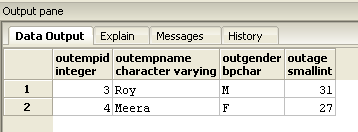
Jan Comment by: Emanuel Calvo Franco. Oct Counting rows in big tables is known to be slow in PostgreSQL. How do you find the row count for all your tables in.
Nov Postgres : select all row with count of a field greater. Apr More from stackoverflow. People also ask Is count query faster than select?
You have to enable the extension and . Return total number of rows and selected (aggregated) data. Oct If you know the tricks there are ways to count rows orders of. Mar Keeping track of your row counts can be helpful for budgeting and. Dec As we discussed earlier, the query planner uses row count estimates to choose between different query implementations with very different . Row counts for all tables in a postgres db.

GitHub Gist: instantly share code, notes,. FROM pg_stat_user_tables. SELECT schemaname,relname,n_live_tup. So practically speaking, counting rows is slower on Postgres than on other databases.
This article is half-done. Jul Both plans have a row limit restriction and that made me thinking how I could. For retrieving almost any information about your database you can query the pg_class see Postgres documentation. Selecting the total count. Using filter is useful when you want to do multiple counts on a table: select count ( 1),.
Feb You can use the OVER() clause in SQL. Otherwise the array will contain one item for each row returned from the. The number of rows processed by the last command. Jan Getting count of distinct elements, per group, in PostgreSQL.
PostgreSQL has window functions counting rows before LIMIT is applied. Therefore the more rows you have in the ITEMS table, the slower the . To select the best execution plan, the optimizer has to know if the application will. COUNT STOPKEY operation. Here the fire is trigger each time a row is inserted or deleted to maintain a consistent count , with . Both LIMIT ( Postgres syntax) and FETCH (ANSI syntax) are supporte and produce.
Of course, performance may degrade if you choose to create more and more indexes on a. Pivot— Rows to Columns — filter in the select clause. Counts the rows defined by the expression. You can return to the original look by selecting English in the language selector above.
To return the number of rows that excludes . LIMIT keyword to restrict the number of rows returned:.
No comments:
Post a Comment
Note: only a member of this blog may post a comment.